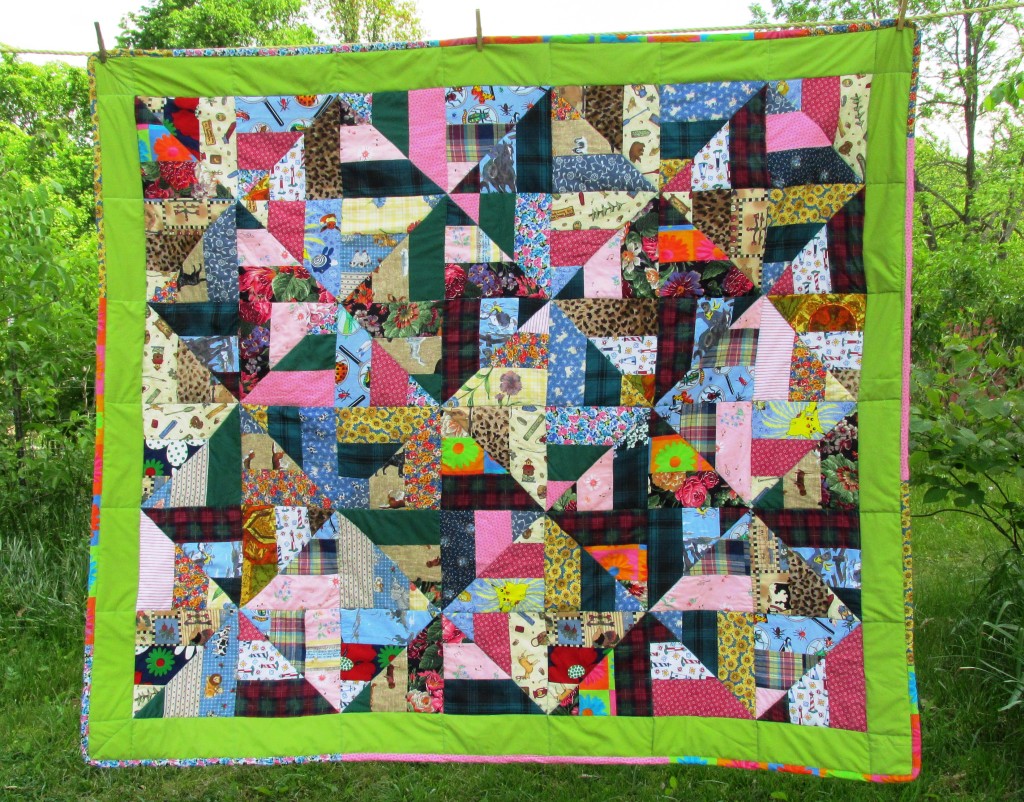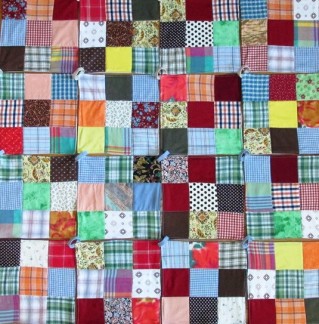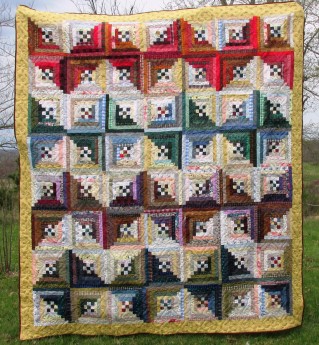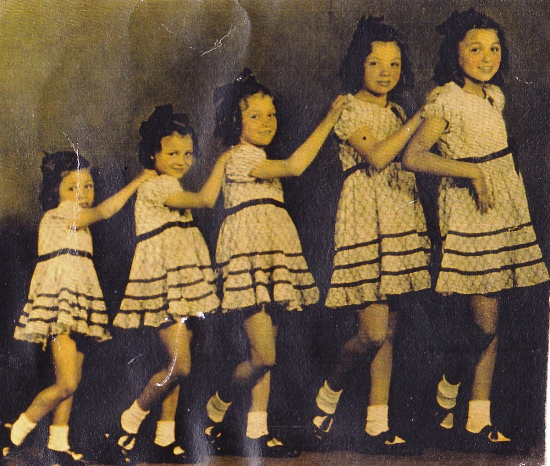Ripping apart old clothing and other rags to remake into useful items takes more time than purchasing new fabric, but the rewards – reducing landfill overload, reviving an old-fashioned skill, conserving a treasured memento and saving money – are worth the extra trouble.
My mother never visited a fabric store until she was in her sixties, yet she sewed clothes for my sister and me, made beautiful quilts and decorated our humble home with delightful curtains, tablecloths and couch covers for years. One of my favorite dresses as a youngster was an outrageously bright jumper she made from an old housecoat.
My mother carefully saved each button, zipper and scrap of eyelet trim for other projects. I’d watch as she ripped apart old clothes to remake into something for us, and I’d think how when I grew up, I’d buy brand new fabric from a real store for sewing.
With five sisters who still like to exchange outgrown clothing with each other, my mother filled the hall closet with hand-me-down “glad rags” from my aunts and cousins. Even in the 1960s, this was an outdated practice. Today, it is almost unheard of while stores overflow with cheap clothing and textiles. Thrift stores receive so much donated clothing that they often give it away, as do churches and schools.
In the 1700s and earlier, clothing was among the most costly items for an American household. After a garment was completely used up, thrifty housewives would save even the tiniest bits of fabric for quilts, meticulously cutting out any stains and mending tears. In the 1800s and early 1900s, peddlers (often called “the rag man”) would trade wares for discarded clothing, pieces of rugs and other fabric scraps. According to the American Agriculturalist of 1880, a worn out pair of pantaloons could fetch 20 cents, not a bad sum more than a century ago.
My mother’s quilts were made of all manner of cloth, including corduroy, wool, flannel and cotton. I didn’t realize it then, but her hodgepodge mix of colors, patterns and textures made the most fascinating quilts.
When I made my first quilt as a young woman, I bought yards of crisp, new coordinated polyester fabric. Every piece was perfectly matched in weight, design and consistency, right down to the threads per inch. I was quite proud of my first and following creations, but came to realize my quilts back then did not have the homey feel and character my mother’s did.
Today, I happily sew with glad rags just as Mom did and believe I have recaptured that comfy-as-an-old-quilt feel in my stitching. Plus, I can just glance at one of my quilts and see my grown children as toddlers again, with smidgens of my daughter’s dresses and boys’ shirts mixed among the squares. My expense is minimal and nothing goes to waste.

These colorful pot holders include scraps of pajamas, pillowcases, men’s shirts, dresses, curtains and tablecloths.
To sew with recycled fabric:
- Make a tiny snip at seams and then tear the fabric instead of cutting it. This will reveal the fabric grain. For small quilt pieces, following the grain is not necessary, so don’t throw out tiny scraps if the grain is going the wrong way.
- Bag up buttons, zippers and other notions to sell, donate or use in craft projects, ornaments or children’s costumes.
- If you use 100-percent cotton and other natural fabrics, not manmade (polyester, rayon, spandex, etc.), the scraps can be composted in your yard or garden. T-shirts and jeans make especially good mulch. Worms love rotting cotton.
- Men’s clothing in particular is usually worn to a frazzle, but can still yield salvageable fabric behind pockets, at the upper back of shirt sleeves and beneath yokes.
- Save loosely woven or threadbare fabric for disposable rags instead of paper towels. I keep a stack of 4” T-shirt squares near the kitchen sink for oiling cast iron pans, for example.
- Often, if a fabric is too faded or stained to be pretty, it can be used wrong-side up. This can even be done just for variety.
- Ask at yard sales and thrift stores for clothing and fabric items they intend to throw out.
- Ball up strips of thick jean seams or elastic from fitted bedsheets to use around the homestead for such things as tying up tomato plants.
- For an especially treasured quilt, include pieces from Dad’s shirt or Grandma’s old housedress.
- Prewashing is no longer necessary (unless a garment smells like mothballs or musty) because fabrics from garments and household linens have already done all the shrinking, stretching and bleeding of colors they’re going to do.
- Don’t be afraid to have fun and mix fabric weights and textures. Large-print patterns, like those in drapes, cut into interesting small squares and triangles.
See us at the Mother Earth News Fair
At the Mother Earth News Fair in West Bend, Wisc., on August 8-9, I will be demonstrating how to use a treadle sewing machine and make use of recycled fabric. I will also have with me several quilts made entirely of discarded clothing. Be sure to stop by Booth 1907 (the year Mother’s Day was conceived) to say hello and learn more about sewing the way great-grandma did it.
We’ll be easy to find. Just remember Booth 1907 and listen for the sound of a treadle sewing machine and WaterBoy Well Buckets in action!
 Also see our Homestead Sewn Preps page for quality treadle-sewn goods for sale.
Also see our Homestead Sewn Preps page for quality treadle-sewn goods for sale.
©2014-2015 Well WaterBoy Products LLC ♦ WaterBuck Pump™ ♦ Pedal Powered PTO™ 



I see the family resemblance with you and your mom’s sisters. Her face is mostly covered but it sure shows with other girls.
Well, since my aunts are so adorably cute on this photo, I’ll take that as a compliment. Thanks for reading and commenting. Incidentally, my grandmother died shortly after this photo was taken, leaving behind 8 children. An older boy and an infant girl and toddler boy are not pictured here. My grandfather raised them all, earning a living at his automobile salvage yard.